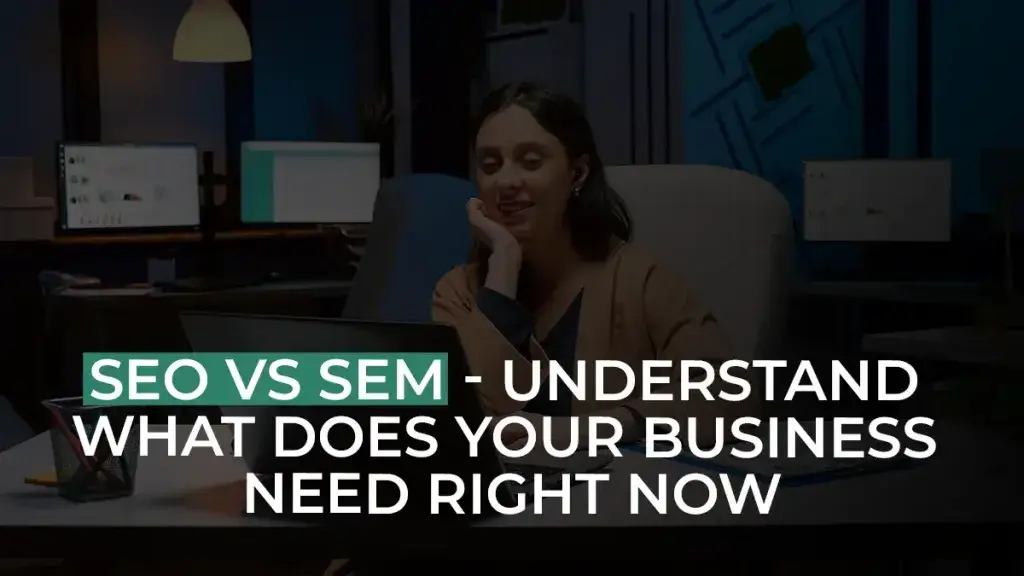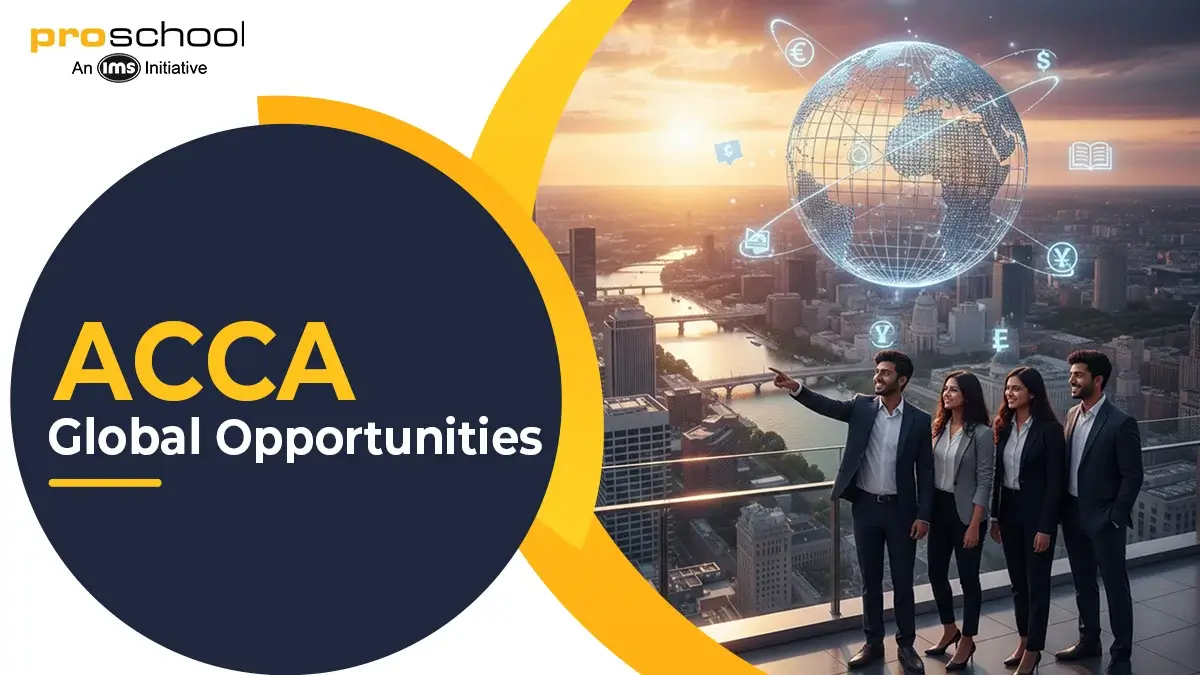SEO vs SEM – Understand What Does Your Business Need Right Now

Here's What We've Covered!
Welcome to the happening world of Digital marketing where terms like SEO and SEM play key roles in shaping the win of a business’s digital presence. Well in simple terms, Search Engine Optimization (SEO) and Search Engine Marketing (SEM) are the fiery duo that pushes traffic to a website as they guide the digital landscape in distinct ways.
So are you interested in learning more about these tools and understanding their importance in helping your business grow?
Well, if yes then you are at the right place as this blog will be your ultimate exploration where we’ll crack the nuances of SEO and SEM, and discuss the differences between them. More importantly, we’ll highlight the significance of choosing the right plan for your business. After all, understanding the SEO vs. SEM dynamics is the key to opening the full potential of your digital endeavors.
So, let’s start discussing the essence of effective online presence and the art of making the right choices for your unique business presence.
What is SEO?
Let’s start this blog by understanding the first term which is SEO.
Well, Search Engine Optimization (SEO) is the art and science of enhancing a website’s visibility in search engine results pages (SERPs) organically, with the ultimate goal of driving relevant traffic and increasing its online presence. In simpler terms, SEO involves optimizing various elements of your website to make it more attractive and relevant to search engines like Google, Bing, and Yahoo.
The heart of SEO lies in its emphasis on organic traffic where the visitors find your website naturally through their searches, rather than through paid advertising. The important point here is that achieving a high rank in search results is crucial because users often click on the first few links that appear, making it imperative for your website to secure a prime position.
Interesting right? Now you must be wondering what are the key ranking factors in SEO.
Well these key factors include creating relevant content, strategically incorporating relevant keywords in your content, website structure so that your audience can have an interactive and engaging experience with your brand, backlinks, page loadspeed, Meta tags, technical SEO- schema, sitemap, etc.
Also Read – Understanding SEO: What It Is, How It Works & Essential Steps to Master It
What is SEM?
In this section let’s move to our next term which is SEM.
SEM, or Search Engine Marketing is a digital marketing approach that involves promoting a website’s visibility in search engine results through paid advertising. Unlike SEO, SEM relies on paid strategies to achieve immediate results and increase a website’s exposure to a target audience.
Wondering how SEM focuses on paid advertising and provides immediate results?
Well, SEM provides instant visibility, quick impact on traffic, targeted audience reach by using Google Ads and social media advertising which provide advanced targeting options, Another key feature is measurable results that allow businesses to track and measure the performance of their ads instantly.
Moreover it offers a competitive edge that allows businesses to respond rapidly to market trends, competitor activities, or changes in consumer behavior. Its cost effective and controlled spending advantage allows businesses to set daily or campaign budgets, providing control over spending.
Also Read – What Is Performance Marketing & How to Learn It?
SEO vs. SEM: Key Differences
After understanding the basics of SEO AND SEM let’s move to understanding the fundamental differences between SEO and SEM that make them important.
The choice between the two often depends on the specific goals, timeline, and budget of a marketing campaign.
| Aspect | SEO | SEM |
| Fundamental Differences | Optimizing for organic search:
|
Paid advertising in search results
|
| Strategic Approach | By using Content optimization, adequate usage of relevant keywords, meta tags, sitemap, schemas and backlinks, it optimises your business to rank on Google for relevant search query. | By bidding on relevant keywords and running ad campaigns it showcases your business to potential customers in making purchases. |
| Cost Implications | Free (organic): No direct payment to search engines.
|
Paid: Requires budget for advertising campaigns (e.g., PPC).
|
| Timeframe for Results | Long-term: It takes time to build and see organic rankings.
It may even take several months to see noticeable improvements in organic rankings and traffic. |
Immediate: This delivers quick visibility through paid advertising.
Once a campaign is launched, ads can start generating clicks and traffic almost instantly, offering quick visibility and potential leads. |
| ROI | Long-term, sustainable
|
Immediate and ongoing investment
|
| Flexibility based on Algorithm Changes | Strategies may take time to reflect changes in search engine algorithms.
|
SEM offers greater flexibility in adapting to algorithm changes.
|
| Targeting Options | Keywords, user intent
|
Demographics, location, devices
|
| Control over Targeting | Limited control: It relies on content optimization and quality.
|
Precise control: It allows specific audience targeting with ads.
|
| Control over Visibility | Indirect control: It influences organic ranking through keyword targeting. | Direct control: Ad placements determine immediate visibility. |
| Competition | Organic rankings
|
Keyword bidding, ad placement
|
| Measurement & Tracking | Organic traffic, keyword rankings
|
Clicks, impressions, conversions
|
| Conversion Optimization | Website elements, content
|
Ad copy, landing pages, targeting
|
| Example of Strategy | Optimizing website content, and building backlinks for authority. | Running Google Ads campaigns targeting specific keywords. |
Well, this section specifically outlines the differences between SEO and SEM however, if you’re keen to learn more about these powerful tools then you must consider exploring the Digital Marketing Course offered by IMS Proschool.
Did you know that their Digital Marketing course comprehensively covers topics such as:
- Fundamentals of website development
- Various web development platforms
- Effective strategies for ranking your website on Google
- Tips for utilizing AI for online business enhancement, and assessing and adjusting your SEO strategy.
This is not all as their course covers so many important aspects of SEO so that you can choose the best for your business. In fact, you can get all this knowledge in just 3 months with over 7 hours of faculty-led training each week as IMS Proschool aims to offer its students an extensive learning experience.
Also Read – Top 10 Benefits of Taking Up a Digital Marketing Course in 2025
Which is Better for Your Business?
SEO & SEM have so much to offer but have you ever wondered about the factors that need to be considered when choosing between SEO and SEM?
In this section, let’s look at those factors and understand what impact SEO and SEM can create for your business.
- While choosing an option based on budget constraints and ROI expectation SEO stands as a better option as it generally requires less immediate financial investment, but results take time. So you must consider if you have the patience for long-term ROI and can sustain efforts without immediate returns or not.
- High competition can make it hard to rank high in searches. Check if your industry prefers paid ads over organic visibility.
- If your rivals use a lot of ads then maybe you can think about using paid ads too to stand out faster.
- SEO is best for long-term goals like building your brand slowly. SEM suits quick results for short-term goals.
- SEO grabs users searching for info, while SEM is good for responding to trends and immediate needs.
- SEO changes take time to show, SEM lets you adjust fast to market changes.
- SEO tracks organic traffic and keywords, while SEM gives real-time data on ad performance.
Ultimately, the choice between SEO and SEM depends on the unique circumstances of your business, considering factors such as budget, competition, goals, audience behavior, and adaptability to market trends.
But remember that a well-balanced strategy may involve integrating both approaches for a comprehensive online marketing plan.
Also Read – Top 10 Google Algorithms You Should Know Before You Start Doing SEO
Real-Life Examples
Now it’s time to look at some SEO vs SEM case studies and SEO vs SEM success stories in the real world.
Are you ready? Let’s get started.
How Myntra Won SEO!
Myntra which is a renowned Indian fashion brand successfully engraved its niche in e-commerce by offering a diverse range of clothing, footwear, and accessories for all ages.
As they were facing the challenge of enhancing organic performance in Clothing and Footwear which is why Myntra implemented a strategic approach by working on the following aspects of their brand:
- Informative Content & Meta Optimization: Refreshed meta descriptions with discounts, prices, and compelling CTAs and introduced fresh content with ‘top searches’ and ‘tables’ concepts, enhancing user experience.
- Schema Implementations: They utilized FAQ Schema for user queries, boosting click-through rates, and employed product schema for direct display of prices and offers on SERPs.
- Dynamic Price Table & Informative Content on List Pages: They conducted a Content Gap Analysis to identify areas lacking informative content and based on the results implemented a diligent price table for featured snippets on SERPs.
- Contextual Link Updates: They actively researched and optimized landing pages for high-search-volume keywords and implemented contextual and footer linking to enhance rankings. Another thing they did was update titles and meta descriptions for uniqueness and relevance.
Wondering what were the results:
- 80% increase in organic sessions for both Clothing and Footwear.
- 79% increase in organic users for Clothing and 80% for Footwear.
- 34% increase in organic revenue for Clothing and 22% for Footwear.
This clearly shows how SEO significantly contributed to Myntra’s enhanced visibility, user engagement, and revenue in the competitive online fashion market.
Also Read – 10 Best Blogs You Should Follow To Learn Digital Marketing
Cred’s Winning SEM Strategy!
The next example is CRED which is a fintech startup from Bangalore founded by Kunal Shah, that made a splash in the Indian market by targeting a specific group of people that were credit card users with good credit scores. They gained attention for their unique approach and effectively used social media and influencer marketing to build a strong brand and loyal customer base.
But what were the crazy marketing strategies that helped to increase its marketing standing and lead to its publicity online?
- Rahul Dravid Ad: CRED’s ad featuring cricket legend Rahul Dravid took an unconventional approach by adding humor to his disciplined image and generating significant social media buzz.
- Influencer Marketing: Collaborating with social media personalities and celebrities created trust and authenticity because influencers shared personal experiences and promoted CRED’s services.
- Reward Programs: CRED’s gamified rewards program made bill payments enjoyable and helped to create customer loyalty.
- Community Building: The app and social media platforms facilitated an exclusive user community by offering curated experiences and privileges that build a sense of belonging.
Wondering the Impact of the above strategies?
- Brand Awareness and Trust: The unconventional ad and influencer collaborations increased brand awareness and established trust.
- Loyal Customer Base: The rewards program and community initiatives cultivated loyalty, driving user engagement and retention.
- Market Expansion: CRED’s approach led to a surge in credit card applications in India, inspiring other institutions to innovate.
- Valuation Growth: CRED’s strategic marketing efforts and venture capital attraction turned it into a unicorn.
Also Read – 12 Different Types Of SEO – Know What Your Brand Needs In 2025
Integrating SEO and SEM
The above discussion raises a significant question: What if we leverage the advantages of both SEO and SEM and operate them together to strengthen our social media strategy?
So if you’re wondering how that can be done make sure to carefully read this section.
- Maximized Visibility: Combining SEO and SEM ensures your brand occupies more real estate on search engine results pages (SERPs), increasing visibility to potential customers.
- Comprehensive Keyword Coverage: SEO focuses on organic keywords, while SEM allows targeting specific keywords through paid ads. Integrating both ensures comprehensive coverage, reaching a broader range of search queries.
- Strategic Targeting: SEM provides immediate visibility for time-sensitive promotions, while SEO builds long-term credibility. Together, they enable strategic targeting for both short-term goals and sustained growth.
- Enhanced User Trust: A presence in both organic and paid results can enhance user trust. Seeing a brand across various search positions reinforces credibility and authority.
- Data Synergy: Combined data from SEO and SEM efforts provides a holistic view of user behavior. Insights from both channels help refine strategies for optimal performance.
Conclusion
In conclusion, we encourage you to experiment with both SEO and SEM as this dynamic approach will ensure that your business remains responsive to shifting market trends, evolving user behaviors, and the ever-changing digital landscape.
If you’re someone passionate about learning deeper into the world of digital marketing and eager to study the nuances of SEO vs. SEM to use them effectively in your business then look no further and consider checking out the Premium Digital Marketing Course offered by IMS Proschool. Their digital marketing course will help you stay ahead in the digital domain and help you open the possibility of moving your business to new heights.
Resent Post
>
Emerging commerce career options in India (2026): From CA to Data Analyst
>
ACCA Opportunities You Didn’t Know About – Think Beyond Audit!
>
Which Courses After 12th Commerce With High Salary Are in Demand Worldwide?
>
How to Find ACCA Jobs Online After Qualifying: Real Portals, Tips & Career Guidance
>
Financial Modelling Classes in Hyderabad: Your Guide to the Best Institutes
Follow Us For All Updates!



